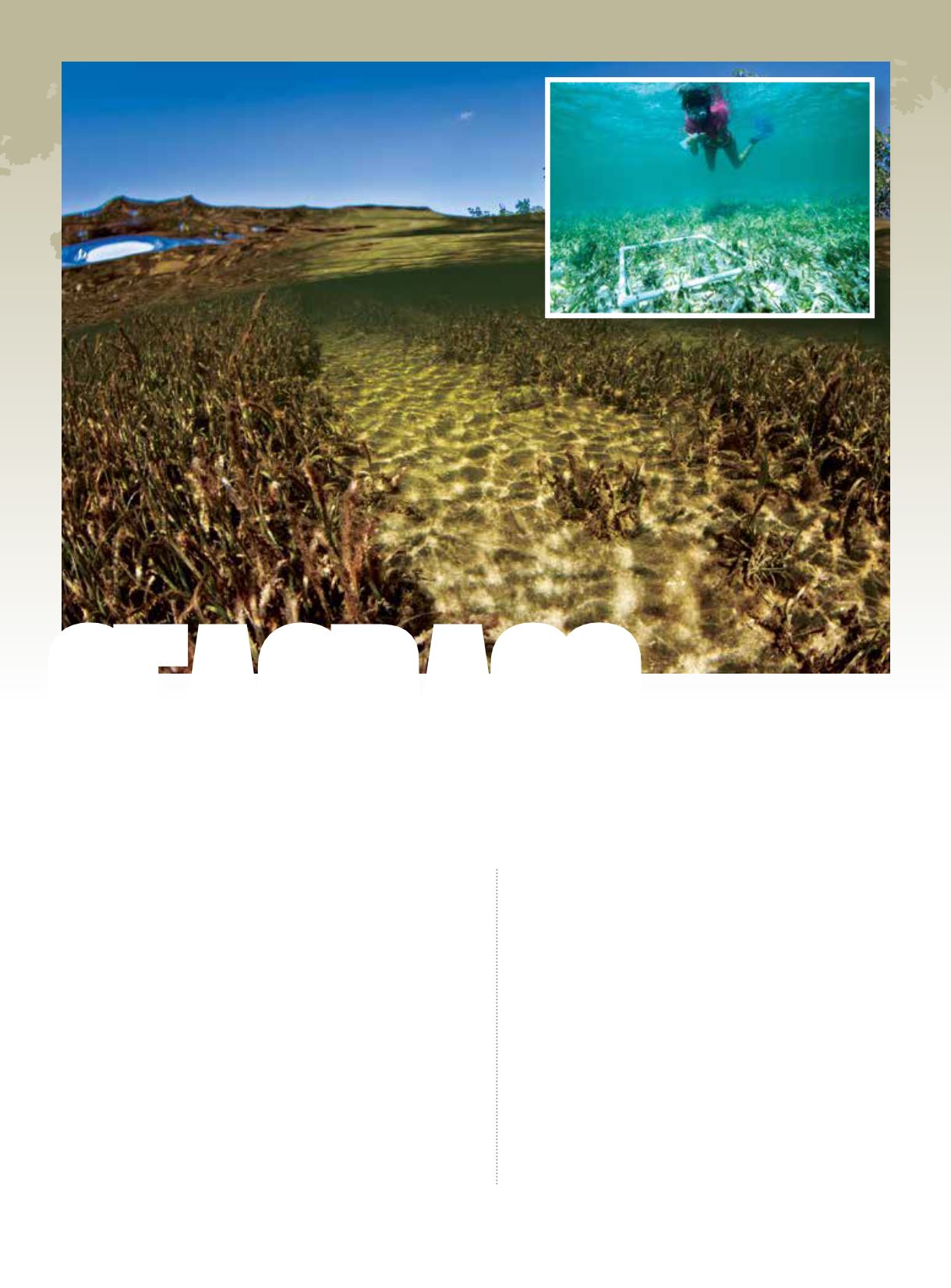
|
757
Careless boating through shallow
seagrass beds creates obvious prop
scars that can take years to heal.
Inset: Sarah Egner conducts a
benthic survey of a seagrass bed.
Opposite: Prop roots dangling from
a red mangrove provide support
for the tree and a habitat to
marine organisms.
Seagrass
What’s So Special About a Bunch of Grass?
Seagrasses dominate coastal marine waters. They are
found around the globe — from polar regions to the
tropics — on all continents except Antarctica. This
domination is in part due to seagrasses’ ability to
reproduce asexually through vegetative growth as well
as sexually. Seagrass blades grow from a horizontal
stem called a rhizome that is buried under the sand or
mud. As the rhizome grows, shoots emerge vertically.
This is how seagrass plants form small patches that
develop into large, continuous meadows.
Most seagrasses reproduce by pollination while
submerged and complete their entire life cycle
underwater. Seagrasses produce flowers, fruits
and seeds in a salty underwater world; pollination,
therefore, is quite different than in terrestrial plants.
Turtle grass (Thalassia testudinum), for example,
produces buoyant fruits that float on the surface
before opening to release seedlings that sink to the
bottom. The seedlings have sticky root hairs that help
anchor the seedling to the sediment.
Seagrasses are not true grasses; they’re actually
close relatives of lilies. Their name is just a product of
the resemblance between their leaves and terrestrial
grasses. Seagrasses are true, photosynthesizing
vascular plants: angiosperms, specifically — flowering
plants. The flowers, usually small and white, can be
seen near the base of the leaf clusters. See if you can
spot one the next time you’re enjoying a seagrass
snorkel.
83
STEPHEN FRINK
JOSHUA FEINGOLD


